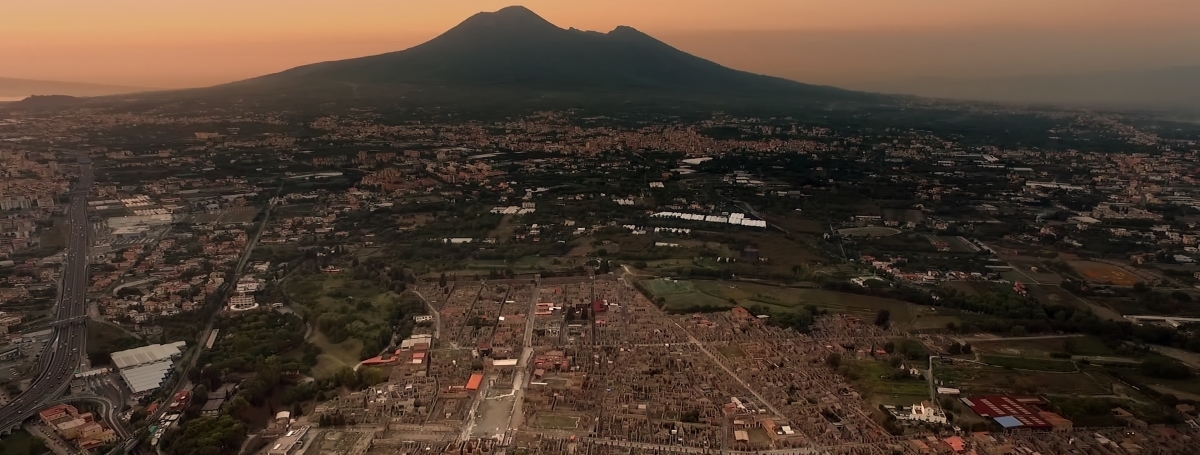 The Archaeological Park of Pompeii is a decentralised body of the Ministry of Culture . It holds special autonomy and is aimed at the preservation, conservation and promotion of public use of the archaeological site. Besides the archaeological site of Pompeii, the jurisdiction of the Archaeological Park also encompasses other museums, cultural heritage sites and buildings, including in Naples the Antiquarium of Boscoreale, the Castello di Lettere, the Archaeological Park of Longola in Poggiomarino, the Reggia di Quisisana in Castellammare di Stabia, the Excavation Sites of Oplontis in Torre Annunziata, the Excavation Sites of Stabiae in Castellamare di Stabia, the Archaeological Site of Villa Regina in Boscoreale, and in Scafati, Salerno the Former Royal Bourbon Powder Factory.
The Archaeological Park of Pompeii is a decentralised body of the Ministry of Culture . It holds special autonomy and is aimed at the preservation, conservation and promotion of public use of the archaeological site. Besides the archaeological site of Pompeii, the jurisdiction of the Archaeological Park also encompasses other museums, cultural heritage sites and buildings, including in Naples the Antiquarium of Boscoreale, the Castello di Lettere, the Archaeological Park of Longola in Poggiomarino, the Reggia di Quisisana in Castellammare di Stabia, the Excavation Sites of Oplontis in Torre Annunziata, the Excavation Sites of Stabiae in Castellamare di Stabia, the Archaeological Site of Villa Regina in Boscoreale, and in Scafati, Salerno the Former Royal Bourbon Powder Factory.
The Ministerial Decree dated 23 rd December 2014, on the ‘Organisation and operation of state museums’, has established the following bodies in charge of the governance of museums and archaeological parks with special autonomy:
a) the Director.
b) the Board of Directors.
c) the Scientific Committee.
d) the Board of Auditors.
These bodies have the following responsibilities:
a) guaranteeing the execution of the museum’s mission.
b) assessing the the Museum’s cost effectiveness, efficiency and efficacy.
c) assessing the scientific quality of the cultural activities, the methods of preservation, and use,
valorisation and communication of the cultural heritage kept by the museum.
– The Director General: Dott. Gabriel Zuchtriegel
– The Board of Directors
– The Scientific Committee
– The Board of Auditors
History…
The Superintendency
In the aftermath of the 1981 earthquake the founding of the Archaeological Superintendency of Pompeii was decreed with Italian law no. 456 of 6th August 1981. The Superintendency was split into two, one covering the municipalities of the Vesuvian area, the other the rest of the Province of Naples and the National Archaeological Museum. The latter, by order of the Bourbons, had been designated to host the Farnese collection as well as the antiquities found in the ruins of Pompeii and Herculaneum.
By article 9 of the Italian law no. 352 of 8th October 1997 the Superintendency was granted scientific, organizational, administrative and financial autonomy. The archaeological superintendent was supported by an administrative manager.
The Presidential Decree no. 233 of 26th November 2007 set up the Special Superintendency for the Archaeological Heritage of Naples and Pompeii, which was vested with budgetary autonomy, like all the new Museum Complexes (Poli Museali). Its area of jurisdiction encompassed the whole Province of Naples and included not only Pompeii, but also Herculaneum and other sites of the Vesuvian area, the Phlegraean Fields area (with the sites of Cuma, Pozzuoli, Baiae), Naples and its National Archaeological Museum, the Sorrento Coast, Ischia and Capri.
A few months after the Special Superintendency had been established, a Presidential Decree of the Council of Ministers dated 4th July 2008 declared the archaeological area of Pompeii to be in a state of Emergency due to the hazardous conditions of the ruins. The Decree appointed a Special Commissioner who completed the activities on 31st July 2010 upon which the Special Superintendency returned to its routine activities.
In January 2014, with the Decree-Law no. 91 of 8th August 2013, with amendments of Law no. 112 of 7th October 2013, the Special Superintendency for the Archaeological Heritage of Naples and Pompeii was divided into two institutions, one covering Naples, the Phlegraean Fields area and Caserta, and the other covering the Vesuvian Sites of Pompeii, Herculaneum and Stabiae, Oplontis and Boscoreale. It became the Special Superintendency for the Archaeological Heritage of Pompeii, Herculaneum and Stabiae.
In 2016, its new name was Superintendency of Pompeii.
With the Ministerial Decree of 12th January 2017 (OJ 10/03/2017) the Superintendency became known as the Archaeological Park of Pompeii thus adjusting to international standards for cultural institutions and sites. In the same year, the archaeological site of Herculaneum became Archaeological Park of Herculaneum, independent of Pompeii.


